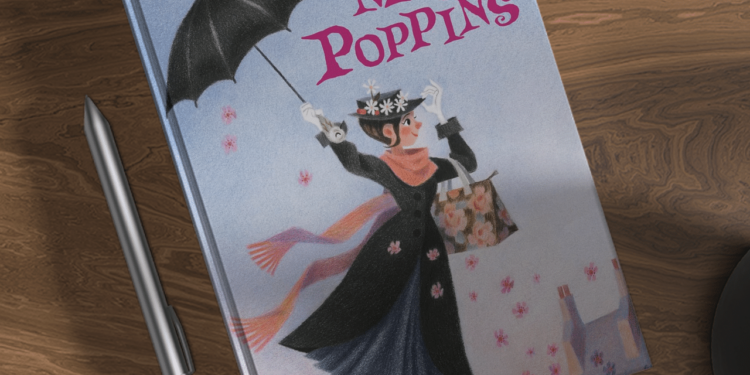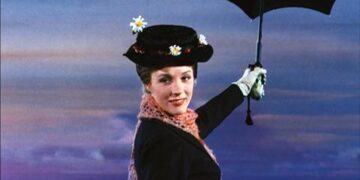Pamela Lyndon Travers, better known as P. L. Travers, was an Australian-born British writer who left an indelible mark on the world of literature and film. Her most famous creation, Mary Poppins, has enchanted generations of readers and viewers alike. But there is much more to Travers’s life and legacy than just the magical nanny. From her early struggles to her enduring impact on popular culture, this article will delve into the fascinating story of P. L. Travers’s life and the lasting legacy she left behind.
P. L. Travers’s Biography: From Pen to Screen
P. L. Travers was born on August 9, 1899, in Maryborough, Queensland, Australia. She developed a love for storytelling at a young age, and her passion for writing led her to pursue a career in journalism. Travers began publishing poems and short stories in various magazines, but it wasn’t until she moved to England in 1924 that her career truly took off.
In 1934, Travers published her first book, “Mary Poppins,” which introduced the beloved character to the world. The book was an instant success and led to a series of sequels. Travers’s unique blend of whimsy, magic, and moral lessons resonated with readers of all ages. The popularity of the books caught the attention of Walt Disney, who saw the potential for a film adaptation.
The Impact of Backbiting and Gossip on P. L. Travers’s Life
Throughout her life, P. L. Travers faced her fair share of criticism and controversy. One of the most significant challenges she encountered was the constant backbiting and gossip surrounding her work. Some critics accused Travers of being too sentimental or lacking depth in her storytelling. Others claimed that her portrayal of the character Mary Poppins was too strict and unsympathetic.
These criticisms took a toll on Travers, who was deeply invested in her work and the message she wanted to convey. She often found herself defending her choices, which only fueled the gossip mill further. Despite the negativity, Travers remained steadfast in her belief in the power of storytelling and the importance of imagination.
Criticism Faced by P. L. Travers and Her Work
In addition to the gossip and backbiting, P. L. Travers also faced criticism for her writing style and themes. Some critics argued that her books were too didactic, focusing too heavily on moral lessons rather than pure entertainment. Others felt that her characters lacked depth and complexity.
However, it is important to note that Travers’s work also had its fair share of admirers. Many readers and literary scholars praised her ability to create a magical and immersive world that resonated with both children and adults. Travers’s unique blend of fantasy and realism allowed readers to escape into a world of wonder while also confronting important life lessons.
P. L. Travers’s Love Life and Friendships: A Glimpse into Her Personal Relationships
Behind the scenes, P. L. Travers’s personal life was just as intriguing as her stories. While she remained tight-lipped about her romantic relationships, it is known that she had a complicated love life. Travers never married and had no children of her own, but she formed deep emotional connections with several individuals throughout her life.
One of Travers’s most significant friendships was with Irish poet George William Russell, also known as “í†.” Their correspondence and shared love for mysticism and mythology provided Travers with intellectual stimulation and emotional support. Travers also had a close friendship with American dancer and choreographer Ruth St. Denis, who inspired her creatively and served as a mentor figure.
Exploring P. L. Travers’s Life Outside of Writing
While P. L. Travers is primarily known for her writing, she had a rich and varied life outside of her literary pursuits. Travers was a devoted student of spirituality and esoteric teachings, drawing inspiration from sources such as Theosophy and the works of Carl Jung. She was also deeply interested in mythology and folklore, often incorporating these elements into her stories.
Travers was a frequent traveler, exploring different cultures and immersing herself in their traditions. These experiences influenced her writing, enabling her to create vivid and authentic settings for her stories. Travers’s love for nature and the environment also played a significant role in her life, and she was an advocate for conservation long before it became a mainstream concern.
P. L. Travers’s Financial Status: Rich or Poor?
Contrary to popular belief, P. L. Travers was not financially destitute throughout her life. While she did experience periods of financial instability, especially during her early years as a writer, her success with the Mary Poppins books ensured a comfortable lifestyle. The royalties from the books and subsequent film adaptations provided Travers with a steady income.
However, Travers was not driven by monetary gain. She valued creative control and often clashed with Walt Disney during the production of the Mary Poppins film. Travers’s insistence on maintaining the integrity of her characters and story sometimes put her at odds with the commercial interests of the studio. Nevertheless, her financial stability allowed her to focus on her writing and pursue her artistic vision.
The Enduring Legacy of P. L. Travers: Why Her Work Is Still Alive Today
Despite the passage of time, P. L. Travers’s work continues to captivate audiences around the world. The enduring legacy of her stories lies in their ability to resonate with readers of all ages. Travers’s themes of imagination, wonder, and the importance of embracing one’s inner child have struck a chord with generations.
The success of the Mary Poppins film adaptations, both the original and the recent sequel, further solidified Travers’s place in popular culture. Her characters and stories have become iconic, inspiring countless adaptations, stage productions, and even a theme park attraction. The magic of P. L. Travers’s imagination lives on, reminding us of the enduring power of storytelling.
Unforgettable Quotes by P. L. Travers
Here are some of P. L. Travers’s most memorable quotes:
- “There is something about Poppins that is more than a person, more than a character. She is magic itself.”
- “In every job that must be done, there is an element of fun.”
- “A writer is, after all, only half his book. The other half is the reader and from the reader the writer learns.”
- “Fairy tales are more than true; not because they tell us that dragons exist, but because they tell us that dragons can be beaten.”
- “We are all damaged in some way. Nobody escapes unscathed. Every step in life is a test of our fortitude, of our ability to bear loss and disappointment, and to keep on going despite it all.”
The Main Settings in P. L. Travers’s Books: A Virtual Tour
P. L. Travers’s books take readers on a journey through various enchanting settings. From the magical streets of Cherry Tree Lane to the whimsical realms of the Great Outdoors, Travers’s vivid descriptions bring these places to life. Here are some of the main settings in her books:
- Cherry Tree Lane: The primary setting in the Mary Poppins series, Cherry Tree Lane is a charming street filled with colorful houses and delightful neighbors.
- The Great Outdoors: Travers’s characters often venture into the natural world, encountering talking animals, magical creatures, and hidden wonders.
- The Clouds: In one of her books, Travers takes readers on an adventure to the clouds, where they can float among the sky and discover new realms of imagination.
- The Land of Lost Things: Travers’s characters also explore a mystical place called the Land of Lost Things, where forgotten items find a new purpose and meaning.
Must-Read Books by P. L. Travers: From the First to the Last
For those wanting to delve into the magical world of P. L. Travers’s books, here is a list of must-reads, starting from the first to the last:
- “Mary Poppins” (1934): The book that started it all, introducing readers to the beloved nanny and her fantastical adventures.
- “Mary Poppins Comes Back” (1935): The sequel to the first book, continuing the magical escapades of Mary Poppins and the Banks children.
- “Mary Poppins Opens the Door” (1943): The third book in the series, featuring new adventures and delightful characters.
- “Mary Poppins in the Park” (1952): This book takes readers on a journey through four different park adventures with Mary Poppins.
- “Mary Poppins From A to Z” (1962): A collection of short stories and poems, each corresponding to a letter of the alphabet.
Understanding the Screen Adaptation of Mary Poppins
P. L. Travers’s Mary Poppins books have been adapted into two beloved films: the original 1964 Disney film and the 2018 sequel, “Mary Poppins Returns.” While both films capture the essence of Travers’s stories, they also incorporate their own unique elements.
The original film, starring Julie Andrews as Mary Poppins, brought the character to life with memorable songs and enchanting visuals. However, it also deviated from Travers’s original vision in some ways, much to her dismay. The 2018 sequel, on the other hand, aimed to stay truer to Travers’s intentions, incorporating elements from her later books and exploring new storylines.
Artists Who Inspired P. L. Travers: Exploring Her Creative Influences
P. L. Travers drew inspiration from a wide range of artistic and literary influences. Some of the artists who inspired her include:
- William Blake: Travers admired Blake’s mystical and imaginative works, which influenced her own exploration of spirituality and mythology.
- Lewis Carroll: The author of “Alice’s Adventures in Wonderland” sparked Travers’s love for whimsical and fantastical storytelling.
- Hans Christian Andersen: Travers found inspiration in Andersen’s fairy tales, which often blended magic with moral lessons.
- J. M. Barrie: The creator of Peter Pan and Neverland, Barrie’s imaginative stories resonated with Travers and influenced her own writing style.
Other Writers to Be Read Absolutely: Recommendations for P. L. Travers Fans
For fans of P. L. Travers who wish to explore similar authors and their works, here are some recommendations:
- J. R. R. Tolkien: Known for his epic fantasy novels, Tolkien’s world-building and rich storytelling will captivate fans of Travers’s magical realms.
- C. S. Lewis: The creator of the beloved “Chronicles of Narnia” series, Lewis weaves religious allegory into his fantastical tales, much like Travers.
- Roald Dahl: Dahl’s whimsical and often darkly humorous stories will appeal to those who appreciate Travers’s unique blend of fantasy and realism.
- Neil Gaiman: With his imaginative storytelling and ability to blur the lines between reality and fantasy, Gaiman is a must-read for Travers fans.
Conclusion: P. L. Travers’s Lasting Impact on Film and Entertainment
P. L. Travers’s life and legacy continue to inspire and enchant audiences worldwide. From her early struggles to her enduring success, Travers’s journey from pen to screen is a testament to the power of storytelling. Through her beloved characters and enchanting worlds, she has left an indelible mark on the world of literature and film. As we continue to revisit her stories and explore her legacy, we are reminded of the magic that can be found within the pages of a book. Let us celebrate P. L. Travers and the timeless joy she has brought to countless readers and viewers.
If you haven’t already, pick up a copy of P. L. Travers’s “Mary Poppins” and embark on a magical adventure that will transport you to a world of wonder and imagination. Join generations of readers who have fallen in love with Mary Poppins and discover why P. L. Travers’s work is still alive and cherished today.










